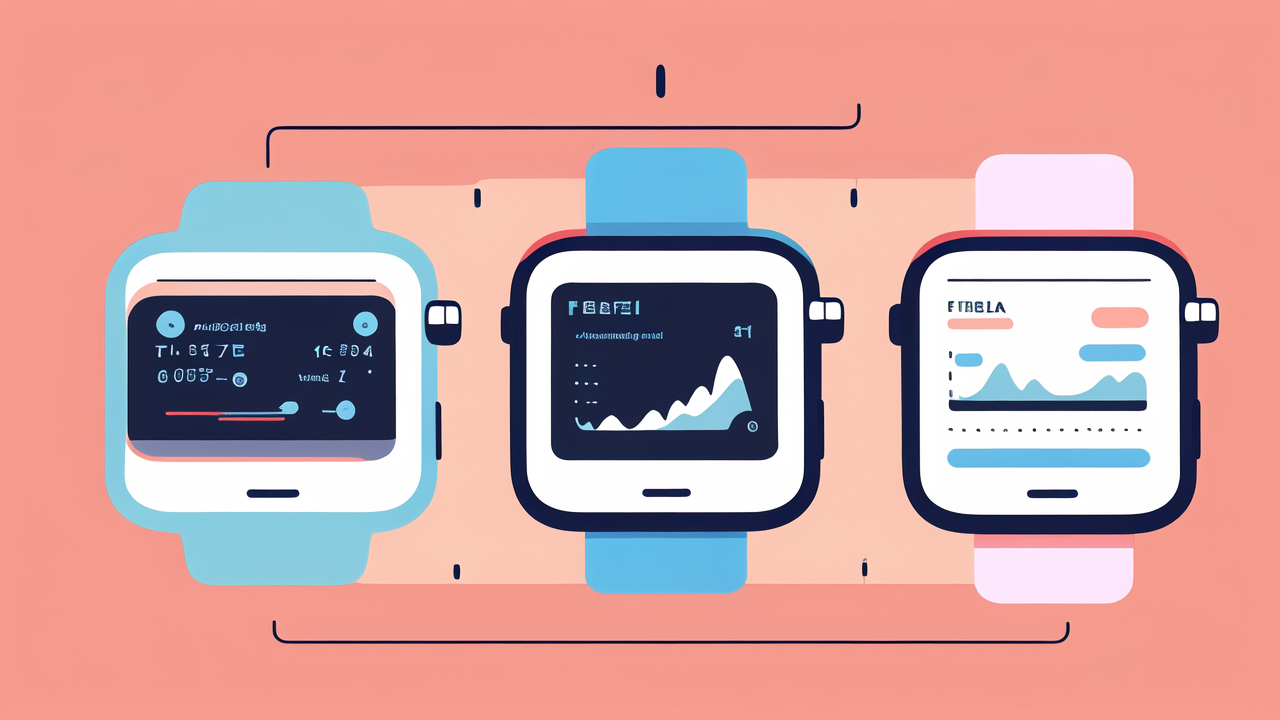Understanding the Fitness Watch Market
The Evolution of Fitness Tracking Wearables
Fitness tracking wearables have come a long way. They started as simple step counters. Now, they're smart devices that do much more. Early models only tracked steps and calories burned. Today's fitness watches can monitor heart rate, sleep patterns, and even stress levels. They've become smaller, more accurate, and more stylish over time. Many now have touchscreens and can connect to smartphones. This lets users see their data in detail and share it with others. The evolution has made fitness tracking more accessible and useful for everyone.

Key Features of Top-Selling Fitness Watches
Top-selling fitness watches offer a range of features to meet user needs. Here are some key features:
- Heart rate monitoring
- GPS tracking
- Sleep analysis
- Water resistance
- Long battery life
- Smartphone notifications
- Customizable watch faces
- Activity tracking for various sports
- Stress monitoring
- Music control
These features help users track their health and fitness goals. They also make the watches more useful in daily life. The best fitness watches balance these features with ease of use and comfort.
Market Trends and Consumer Preferences in the United States
In the U.S., fitness watch trends are shifting. Consumers want more than just step counting. They're looking for devices that offer comprehensive health insights. There's a growing interest in watches that can track multiple sports. Sleep tracking has become a must-have feature for many buyers. People also want watches that look good and fit their style. Battery life is a key factor in purchase decisions. Many consumers prefer watches that can last several days on a single charge. There's also a trend towards watches that can work without a phone nearby. This gives users more freedom during workouts.
Analyzing Fila Watches' Fitness Capabilities
The Technology Behind Fila Watches' Fitness Features
Fila watches use basic technology for fitness tracking. They typically include a pedometer to count steps. Some models may have a simple calorie counter based on step count. Fila watches often use quartz movement for timekeeping. This ensures accurate time but doesn't allow for advanced tracking. Most Fila watches don't have GPS or heart rate monitors. They rely on movement sensors to track activity. The technology is simpler compared to advanced fitness trackers. This makes Fila watches more affordable and easier to use. However, it also limits their ability to provide detailed fitness data.

How Fila Watches Stack Up Against Modern Fitness Trackers
Fila watches fall short when compared to modern fitness trackers. They offer basic step counting and time tracking. But they lack many features found in advanced devices. Fila watches don't typically have heart rate monitoring or GPS. They can't track sleep patterns or provide stress analysis. Battery life is often longer in Fila watches due to simpler tech. But this comes at the cost of fewer features. Fila watches are more affordable and may be enough for casual users. However, serious fitness enthusiasts will find them lacking. Modern trackers offer more accurate data and a wider range of metrics.
The Role of Fila Watches in a Holistic Fitness Regime
Fila watches can play a basic role in a fitness regime. They're good for people who are just starting to track their activity. The step counter can motivate users to move more throughout the day. Fila watches are simple to use, which can be less overwhelming for beginners. They can help create awareness about daily activity levels. For some, this basic tracking is enough to encourage a more active lifestyle. Fila watches can be part of a larger fitness plan. They work well alongside other tools like fitness apps or gym routines. However, for those seeking detailed health insights, Fila watches may not be enough on their own.
Strategic Positioning in the Wearable Fitness Technology Landscape
Fila Watches' Place in the Competitive Fitness Watch Market
Fila watches occupy a specific niche in the fitness watch market. They target budget-conscious consumers who want simple functionality. Fila's brand recognition in sports apparel helps them in this space. Their watches are often seen as fashion accessories with basic fitness features. This positions them differently from high-end fitness trackers. Fila watches compete more with other fashion watch brands that offer step counting. They're not direct competitors to advanced fitness trackers like Fitbit or Apple Watch. Fila's strategy seems to focus on affordability and brand loyalty. This approach can attract casual users who aren't ready for complex fitness tech.

The Advantages of Advanced Fitness Trackers Over Fila Watches
Advanced fitness trackers offer several advantages over Fila watches:
- More accurate health and fitness data
- Comprehensive activity tracking for various sports
- Heart rate monitoring and GPS tracking
- Sleep analysis and stress monitoring
- Smart notifications and app integrations
- Customizable features and watch faces
- Regular software updates with new features
- Water resistance for swimming and other water sports
- Longer-term health trend analysis
- Community features for motivation and competition
These advantages make advanced trackers more suitable for serious fitness enthusiasts. They provide a more complete picture of overall health and wellness.
Future Outlook: The Potential of Fitness Watches in the United States Market
The fitness watch market in the U.S. shows strong growth potential. Consumers are becoming more health-conscious. This drives demand for devices that can track and improve wellness. Future trends may include more advanced health monitoring features. Watches might track blood pressure, blood sugar, or even detect early signs of illness. There's also potential for more personalized fitness advice based on user data. Integration with other smart home devices could expand. This would create a more connected health ecosystem. The market may split further between basic and advanced devices. This could create opportunities for brands at both ends of the spectrum. As technology improves, the line between smartwatches and fitness trackers may blur even more.




Leave a comment
This site is protected by hCaptcha and the hCaptcha Privacy Policy and Terms of Service apply.